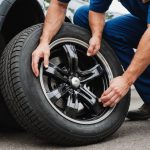In the UK, ensuring that your vehicle’s safety features are functioning correctly is not just a recommendation; it is an essential part of road safety. Each year, countless accidents occur due to malfunctioning systems in vehicles. Whether you drive a compact car or a larger vehicle, understanding how to check and maintain these crucial safety features can save lives. This article will guide you through the steps necessary to ensure that your driving experience is as safe as possible for you, your passengers, and other road users. We will cover various aspects, including regular maintenance, MOT checks, and practical tips for drivers to ensure their vehicles are in top condition.
Understanding Vehicle Safety Features
The first step in ensuring your vehicle’s safety is understanding what features are essential for safe driving. Most modern vehicles come equipped with various safety systems designed to protect you and your passengers. These include anti-lock braking systems (ABS), traction control, airbags, and crumple zones. Knowing how these systems work will help you appreciate their importance during your regular checks.
Also to read : How do mileage and age affect a vehicle’s attractiveness in the used car market in the UK?
When you get behind the wheel, your safety relies on the proper functioning of these features. The ABS prevents your wheels from locking up during hard braking, allowing for greater control. Meanwhile, traction control helps maintain grip in slippery conditions, significantly reducing the chance of skidding. Furthermore, airbags deploy in the event of a collision, providing an extra layer of protection.
To ensure these systems work effectively, you should refer to your vehicle’s manual. It provides detailed information on how each safety feature operates and the maintenance required to keep them functioning properly. Regular inspections and understanding warning signs, like dashboard alerts or unusual sounds while driving, are pivotal.
In the same genre : How can UK drivers stay updated on vehicle recalls and safety notices?
By familiarizing yourself with your vehicle’s safety features, you position yourself as a responsible driver. This knowledge is crucial for performing necessary checks and ensuring the longevity of your systems. Remember, a well-maintained vehicle not only offers a safer experience but also contributes to a smoother drive, enhancing your overall driving satisfaction.
Regular Maintenance Checks
Maintaining your vehicle’s safety systems goes far beyond simply checking your oil or tire pressure. Regular maintenance checks are pivotal for ensuring all aspects of your vehicle function correctly. It’s advisable to develop a routine that includes checking the fluids, brakes, lights, and other critical components.
Start by checking your brake system. Uneven brake wear or low brake fluid can significantly compromise your vehicle’s ability to stop effectively. Make sure to inspect the brake pads and rotors regularly. Additionally, keep an eye on your tyres. They are your only contact with the road, and worn-out or improperly inflated tyres can lead to accidents. Regularly check your tyre pressure and tread depth to ensure they are within safe limits.
Next, inspect your vehicle’s lights, including headlights, brake lights, and indicators. These lights are vital for visibility during night driving and for alerting other road users of your intentions. A blown bulb is a simple fix but can have serious implications for road safety.
It’s also advisable to schedule a professional MOT check annually, as it is a legal requirement for all vehicles over three years old in the UK. During this inspection, a certified technician will assess your vehicle’s roadworthiness, including its safety features. Ensure you choose a reputable garage, as their expertise will enhance your vehicle’s reliability and safety.
Incorporating these regular checks into your routine can prevent minor issues from escalating into significant problems, ensuring that your vehicle remains safe to drive. It empowers you as a driver, knowing that you are taking proactive steps to safeguard yourself and others on the road.
The Importance of MOT Checks
In the UK, the MOT test is a vital aspect of vehicle safety, ensuring that all cars meet minimum safety standards. Without a valid MOT, not only are you risking your safety, but you are also driving illegally, which can lead to hefty fines and legal consequences.
The MOT checks numerous safety features, including brakes, steering, lights, and suspension. This comprehensive evaluation provides peace of mind, confirming that your vehicle is safe to drive. Scheduling your MOT in advance is wise, so you have ample time to make any necessary repairs that might be flagged during the test.
Before the test, consider conducting your own preliminary checks. Make sure your lights are functioning, your tyres are in good condition, and your windscreen wipers are effective. This preparation can save you time and money, as many issues can be resolved before the official inspection. If your vehicle fails the MOT, you will receive a list of faults that need rectification. Prioritize these repairs, as driving with an expired or failing MOT can severely impact your insurance and lead to penalties.
Additionally, keep an eye on the expiration date of your MOT certificate. It’s important to plan ahead to avoid any lapse in your vehicle’s legality on the road. Many drivers opt for an MOT reminder service that notifies them when their test is due.
Remember that an MOT is not just a legal obligation but a privilege that ensures your vehicle is roadworthy. As responsible drivers, prioritizing the MOT ensures that safety features are functioning correctly, thereby enhancing your overall driving experience.
Fuel Efficiency and Safety Systems
While safety is paramount, understanding how it intertwines with fuel efficiency is equally important. Many modern vehicles come equipped with features aimed at improving both safety and efficiency. For instance, systems like engine management and fuel injection contribute to not only smoother operation but also better fuel consumption.
When a vehicle’s safety systems work properly, they can indirectly enhance fuel efficiency. For example, a well-functioning braking system allows for more efficient energy use, reducing the need for hard braking that can waste fuel. Similarly, maintaining optimal tyre pressure not only ensures safety but also maximizes fuel efficiency.
In addition to regular checks, consider adopting driving habits that promote safety and efficiency. Smooth acceleration and gentle braking help maintain vehicle speed and conserve fuel. Avoiding rapid starts and stops can not only save you money at the pump but also reduces wear on your vehicle’s safety systems, ensuring they last longer.
Moreover, many drivers overlook the impact of additional weight on their vehicle’s safety and efficiency. Carrying unnecessary items can lower your vehicle’s performance and increase fuel consumption. Regularly clearing out clutter not only makes your vehicle safer but also enhances its efficiency.
As you maintain your vehicle, remember that safety and efficiency go hand in hand. Investing time in understanding how these systems work together will benefit not just your vehicle’s longevity but also your wallet.
Ensuring your vehicle’s safety features are functioning properly is a responsibility that every driver must take seriously. Through regular maintenance, diligent MOT checks, and an understanding of how safety systems work, you can significantly reduce the risk of accidents. By adopting proactive driving habits and being aware of your vehicle’s condition, you contribute to a safer driving environment for yourself and other road users.
Remember that a vehicle is a significant investment, and prioritizing its safety features not only protects your investment but also enhances your overall driving experience. Make it a habit to care for your vehicle’s safety systems and enjoy the peace of mind that comes with knowing you are doing your part to ensure road safety.











